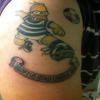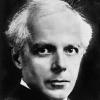| Ray Reardon RIP 20:07 - Jul 20 with 2743 views | loftboy |
Met him in 1973 at camber sands, my dad played a frame against him. |  |
| |  |
| Ray Reardon RIP on 20:09 - Jul 20 with 2727 views | qpr_1968 |
rip ray.....top man |  |
|  |
| Ray Reardon RIP on 21:42 - Jul 20 with 2590 views | stowmarketrange |
Considering he looked old when pot black started on bbc in the 70’s,he’s done well to last this long.RIP Ray. |  | |  |
| Ray Reardon RIP on 08:48 - Jul 21 with 2377 views | hubble |
I had no idea what an extraordinary life Ray lived, but I've just read his obit in the Telegraph. Check it out - what a man!
"Raymond Reardon was born on October 8 1932 in the mining village of Tredegar, South Wales. He was educated locally and left school at 14 having displayed, in lieu of academic achievement, a facility for snooker, which he played for small change in the Tredegar Institute.
Having considered but rejected the Merchant Navy and the RAF, he worked briefly as a garage mechanic before joining his father down the mines as a “Bevin Boy”. Reardon only worked day shifts in order to leave time available for snooker practice and he wore white gloves to ensure his hands remained clean and sensitive.
In 1949 he was runner-up to John Ford in the Welsh Snooker Championship, a defeat he used as a spur to greater and more focussed practice. No longer was he content to be a mere potter of balls, and he began absorbing techniques such as the stunned screw shot as he sought to become a master of the cue ball.
His lonely practice paid dividends, for the following year he defeated Ford in the final of the Welsh Championships and held the title for the next six years until his family moved to Staffordshire to find work after pit closures in Tredegar.
While working in the Florence Colliery in North Staffordshire, Reardon was almost the victim of a fatal accident when a mine shaft collapsed and he was trapped by rubble for several hours. Undeterred, he broadened his capabilities as a miner by qualifying as a fire officer and a shot firer after taking a course at the North Staffordshire Technical College.
He was also tested for his IQ and found to be in the Mensa class, after which he was offered, but declined, a place at Ruskin College, Oxford, on a trade union scholarship.
In 1957 the legendary snooker champion Joe Davis played Reardon in a televised exhibition match in Stoke-on-Trent. After the game Davis presented Reardon with a cue which he used for his entire career, apart from a single game in South Africa after it had been stolen. Reardon’s appeal for, and its subsequent return, made front page news across that country.
It had been a memorable night in Stoke-on-Trent as he also met his wife, Sue, the daughter of a snooker-playing local businessman. After his marriage Reardon quit mining and worked as a policeman on the beat in North Staffordshire for seven years. He was twice commended for his bravery, the second time for reasoning with, and successfully disarming, an unbalanced gunman in a crowded shopping centre.
After reaching the semi-finals of the English Snooker Championship in 1957 and 1958 and losing in the first round in 1959, Reardon did not enter a major tournament again until 1964. Instead he concentrated on practice, honing his defensive skills and developing his killer instinct while also entering smaller tournaments.
In 1964 he entered and won the National Championship, beating John Spencer 11-8 in the final. Although in the following two years he was unable to progress beyond the semi-final stage, he was selected to represent England on a three “Test” tour of South Africa in 1967. Amid packed houses Reardon and his partner Jonathan Barron defeated the South Africans 2-1.
The overwhelming response of the South African public and their willingness to pay to see exhibition games convinced Reardon that it would be possible – if not easy – to make a living out of snooker, and he turned professional at the end of 1967.
At this time there were only 10 snooker professionals in the country, with little sponsorship or resource, and they did not welcome any addition to their number. Consequently Reardon’s first years as a professional were extremely difficult and he had to supplement his earnings with casual work as a painter and decorator.
Indeed, it was only by means of a successful tour of South Africa in 1968 that he managed to remain solvent – even if the exhibition games that he had to play included one on an Afrikaner farm when he had to use a table each of whose four corners touched the walls of a circular barn.
In the World Professional Snooker Championship of 1969, Reardon lost in the quarter-finals to Fred Davis, learning invaluable lessons of restraint from the master of defensive snooker – one frame went 35 minutes before a ball was potted.
The same year colour television introduced the inaugural Pot Black competition, which Reardon won. Pot Black was an immediate success with the televiewing public who relished the soporific rhythms of the sport, the skills of the competitors at a game that everyone could play in pubs and clubs, the scope for close-ups to betray the tensions of the participants and the air of faux grandeur created by their bow ties and evening dress.
But this overnight success brought its own problems, for the producers of Pot Black were keen to see cliffhanger finishes and there were several accusations of matches being fixed. For a moment snooker was unsure of itself, hovering between being a sport and an entertainment, such as wrestling.
Fortunately sanity prevailed and, with Reardon’s vociferous support it was formally established that matches were to be played without regard to programming preference.
In 1970 Reardon beat John Pulman 31-26 to win the World Professional Championship and became Stoke-on-Trent’s first world champion in any sport. The prize money alleviated his financial problems and the title vindicated his decision to turn professional.
After another successful tour of South Africa, Reardon, in order to raise the profile of his sport, agreed to play a second World Championship in Australia in November 1970, only six months after he had won it. After a tournament fraught with technical problems he lost in the semi-final to the eventual winner, John Spencer.
Returning to England, he established a long association with Pontin’s holiday camps, in which he would play exhibition games and demonstrate trick shots to holidaymakers. An exceptionally balanced individual, Reardon never let his fame or increasing wealth remould his personality, and he continued to perform at Pontin’s long after it was a financial imperative.
In 1973 he regained his world title by beating Eddie Charlton and he remained world champion for the next three years, beating successively Graham Miles, Charlton again and Alex Higgins. He was a supreme ambassador for his sport, whether playing exhibitions, giving clinics and television demonstrations, or flying to India at short notice to complete a tour for Alex Higgins, who had offended his hosts by refusing to wear a tie on account of the heat.
When world rankings were introduced in 1976, Reardon was the first world No 1, holding the position until 1981.
It was, he suspected, as much due to his onerous schedule as to overconfidence that he finally lost his title in 1977 to his old rival John Spencer. Although he regained it the following year by beating Perrie Mans, and added a second Pot Back title in 1979, his decade of dominance was ending, and the arrival of younger talents such as Steve Davis, inspired by the new wealth and popularity of the sport, ensured that he could never regain his pre-eminence.
Throughout the 1980s and 1990s Reardon revelled in his role as elder statesman. As chairman of the World Professional Billiards and Snooker Association, he settled arguments and attracted sponsorship with equal charm. He wrote an autobiography in 1982 entitled, simply, Ray Reardon, in addition to two technical books, Classic Snooker and Ray Reardon’s Fifty Best Trick Shots.
He was named Most Entertaining Personality of the Year in 1979 by the London Daily News, awarded a gold medal alongside Gareth Edwards by the Sports Council of Wales and received a host of plaques and honours from the proud citizens of Stoke-on-Trent. He was appointed MBE in 1985.
Beyond this recognition, the tribute that he most treasured were the words of Joe Davis, who said, after Reardon’s 1974 world championship victory: “He is a credit to the profession. I could not give him advice. He does it all perfectly.”
Reardon retired in 1991 and went on to work as a consultant for Ronnie O’Sullivan, helping him win the world title in 2004. “Ray Reardon brought a side to the game I never knew existed,” O’Sullivan said. In 2017 the trophy awarded to the winner of the Welsh Open was renamed the Ray Reardon Trophy.
Ray Reardon married Sue Carter in 1959; they had a daughter and son but divorced in 1986. In 1987 he married Carol Covington.
Ray Reardon, born October 8 1932, died July 19 2024"
https://www.telegraph.co.uk/ob |  |
|  |
| Ray Reardon RIP on 08:57 - Jul 21 with 2357 views | PeterHucker |
Amazing life. Ray was the best in the business when I first started getting into snooker as a kid.
One part of the obituary above confused me……..
The bit about the snooker table in South Africa…..
“when he had to use a table each of whose four corners touched the walls of a circular barn.”
If all 4 corners were touching the wall, then it would be impossible to move around the table.
Unless the circular barn had doors on each of the 4 sides of the table?
Or he had to climb over or under the table to play a shot? |  | |  |
| Ray Reardon RIP on 11:43 - Jul 21 with 2199 views | MrSheen |
| Ray Reardon RIP on 08:57 - Jul 21 by PeterHucker |
Amazing life. Ray was the best in the business when I first started getting into snooker as a kid.
One part of the obituary above confused me……..
The bit about the snooker table in South Africa…..
“when he had to use a table each of whose four corners touched the walls of a circular barn.”
If all 4 corners were touching the wall, then it would be impossible to move around the table.
Unless the circular barn had doors on each of the 4 sides of the table?
Or he had to climb over or under the table to play a shot? |
How did they even get it into the barn?
RIP RR. His twin careers in mining and snooker explain his vampiric complexion! |  | |  |
| Ray Reardon RIP on 12:52 - Jul 21 with 2152 views | SydneyRs |
Remember him being around when I got into watching snooker in the early 80s, but by then his powers were on the wane and Steve Davis was on the scene and winning most things. Hated Davis at the time as I liked players like Higgins and White, but he turned out to be a decent bloke.
Snooker was full of characters back then, Reardon, Big Bill Werbeniuk (who convinced everyone he needed to drink at least 8 pints to stop an arm tremor, different times 😄), Cliff the grinder Thorburn, Jimmy White, Alex Higgins etc.
The Davis v Dennis Taylor world championship final is one of the best things I've ever watched live. Unbearable tension which even the usually unflappable Davis succumbed to. True sporting theatre at its very best. [Post edited 21 Jul 2024 12:52]
|  | |  |
| Ray Reardon RIP on 13:00 - Jul 21 with 2126 views | Boston |
They dug down - in the barn. [Post edited 21 Jul 2024 13:01]
|  |
|  |
| Ray Reardon RIP on 13:05 - Jul 21 with 2111 views | Boston |
Proper Gent was Reardon, my Dad bought his autobiography and I thoroughly enjoyed reading it. |  |
|  |
Login to get fewer ads
| Ray Reardon RIP on 16:37 - Jul 21 with 2010 views | CamberleyR |
|  |
|  |
| Ray Reardon RIP on 17:08 - Jul 21 with 1982 views | stowmarketrange |
It’s incredible how he managed to stay calm and not move for 3 hours while they dug him out.I don’t suppose you’d be too upset at losing a frame of snooker after that experience. |  | |  |
| Ray Reardon RIP on 13:40 - Jul 22 with 1782 views | francisbowles |
Thanks for posting the obituary, Hubble.
I seem to remember when snooker became famous his nickname was Dracula. |  | |  |
| |